“It is more shocking to see a naked body in this country than a charred cadaver.”
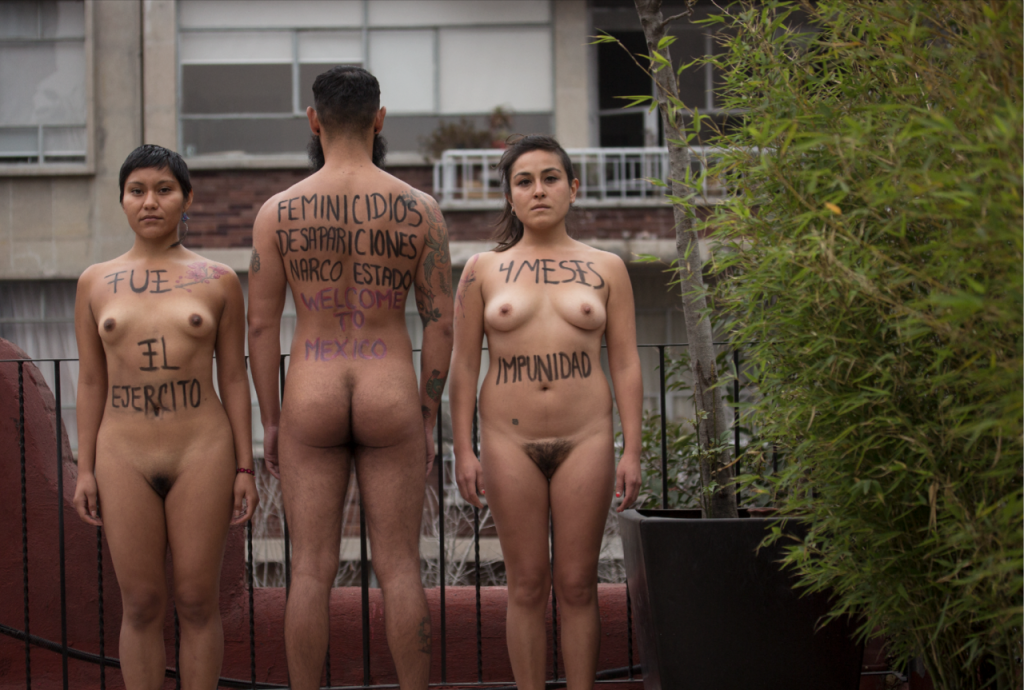
“It was the army,” “Femicides, Disappearances, Drug State: Welcome to Mexico,” “Four months of impunity”: Students in Mexico City use their bodies to call out the government for their role in Mexico’s organized crime (ponerelcuerpo.tumblr.com)
In late January, the government of Mexico officially declared the 43 protesting college students kidnapped last September after a confrontation with police to have been killed. In doing so, the state has washed its hands of any guilt in the incident, which has been accompanied by accusations of government corruption and widespread Mexican refusal to investigate such claims.
A protest and photography project, “Poner el cuerpo. Sacar la voz,” (Using the body. Expressing the voice) has called both the government’s involvement in the disappearances and killings and the regularity of violence in Mexican culture into question.
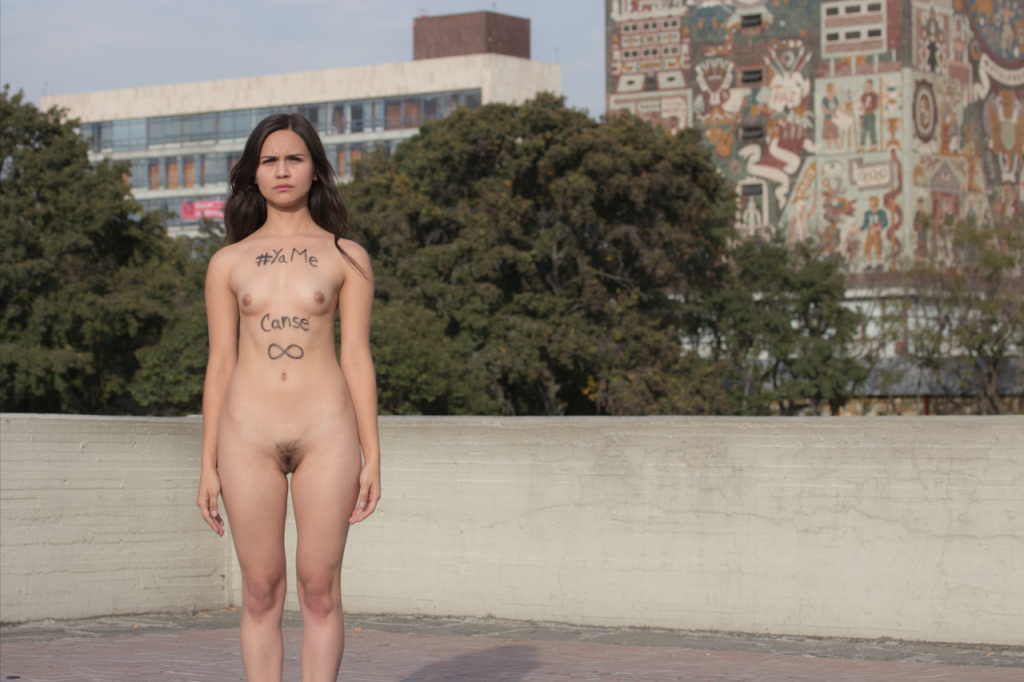
#YaMeCanse (I am tired) has become a slogan for Mexico’s anti-corruption movement, expressing Mexicans’ frustration with their government (ponerelcuerpo.tumblr.com)
The protestors, who converted their bodies into human billboards, brought their messages to the center of Mexico City, in a public demonstration organized by Édgar Olguín and Sara Yatziri Guerrero Juárez, a photographer and model who are part of a greater activist campaign to draw attention to the plight of the Zyotzinapa 43, as well as the broader picture of corruption in Mexico.
Juárez, recognizing the danger of self-expression in Mexico’s society, noted the need for such a movement “in a country that sees six femicides a day and where the government makes students disappear.”
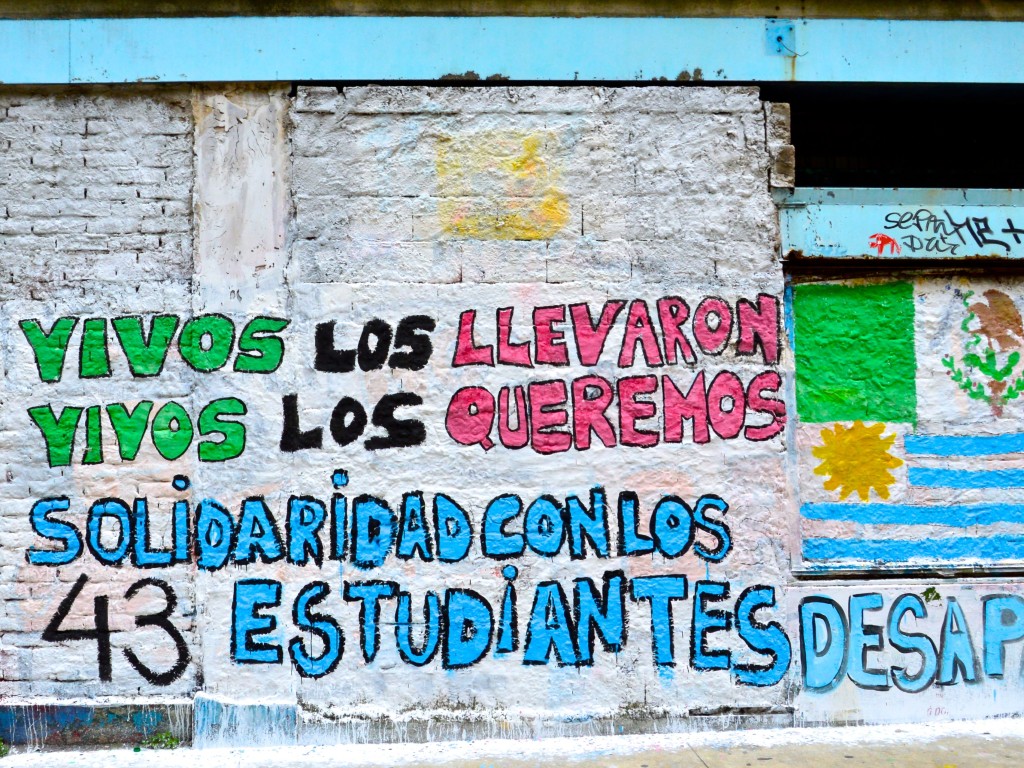
“They were taken alive, we want them alive. Solidarity with the 43 disappeared students,” reads a work of street art in Mexico City (Wikimedia Commons.)
Accounts of the students’ last days have been varying, with police reports describing the students having hijacked three buses and, after disappearing once arrested by the police, having been executed by cartels. The implausibility of this story led the Poner El Cuerpo protestors to expose themselves in hopes of exposing the uncomfortable truth hidden behind layers of corruption.
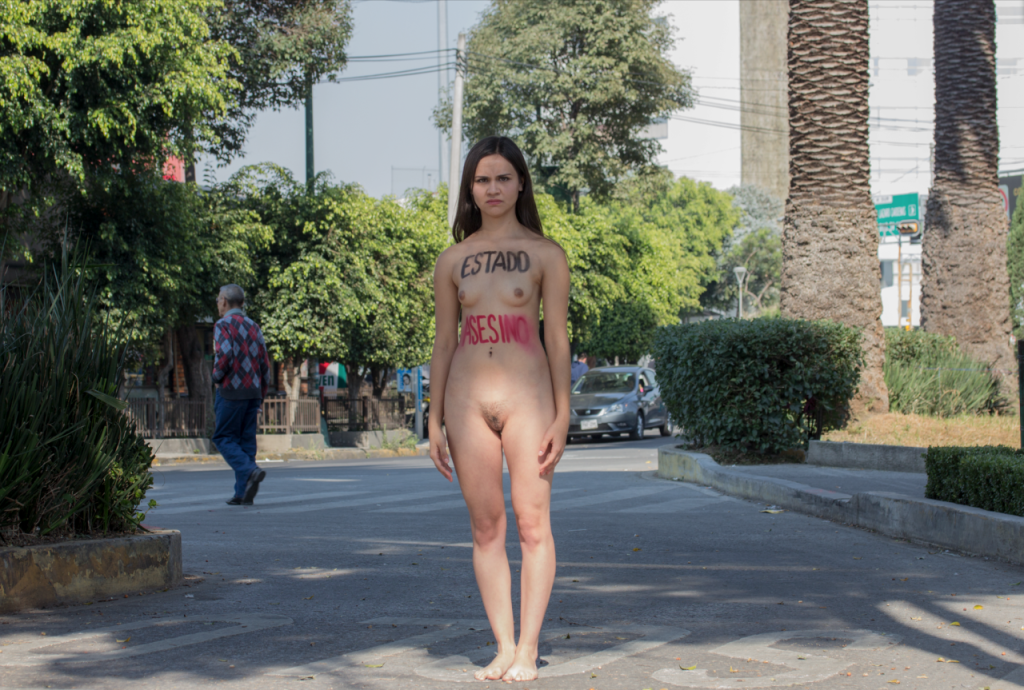
“State Assassin.” The demonstrators have made their disbelief of the government’s account and their belief in its true role in the disappearances unquestionably clear (ponerelcuerpo.tumblr.com)
Sara Juárez described one of the protest’s most impactful moments, centered around her disrobing in a crowded subway car. As she stripped in the on the metro, transforming from passenger to billboard, “the silence became heavy and overwhelming. In other occasions, there was nervous laughter, cold stares, insults, some cried out for censorhisp and mothers would cover their children’s eyes.”
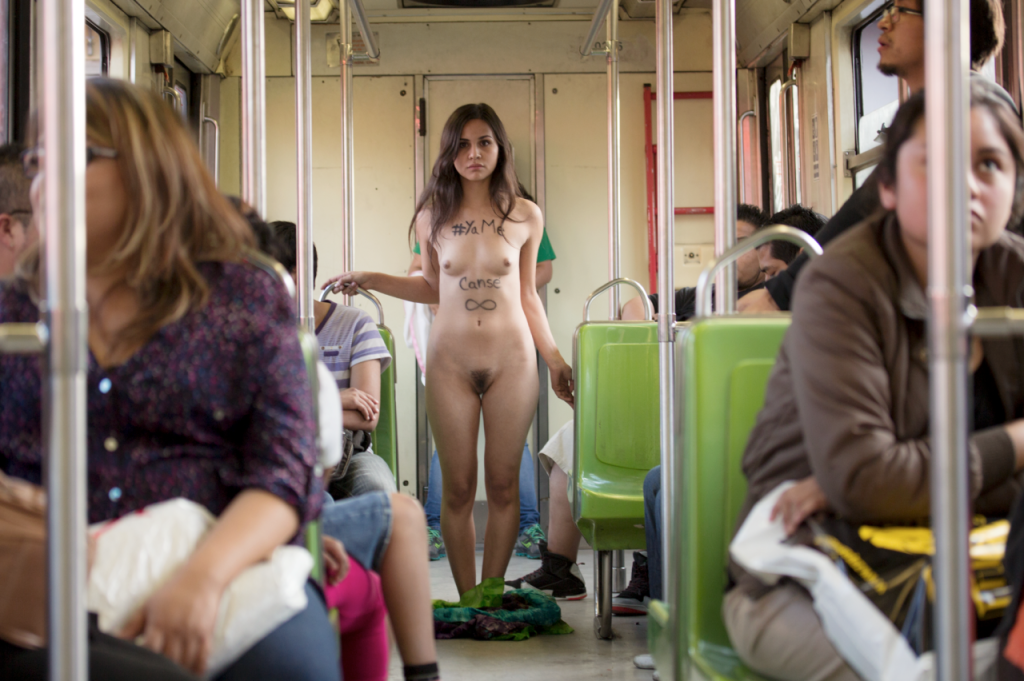
Discussion on government corruption was brought into the public eye in Mexico’s capital (ponerelcuerpo.tumblr.com)
The protestors’ stagings were spread throughout the city, from subway cars to middle class neighborhoods, demonstrating the importance of addressing corruption for Mexicans from all backgrounds.
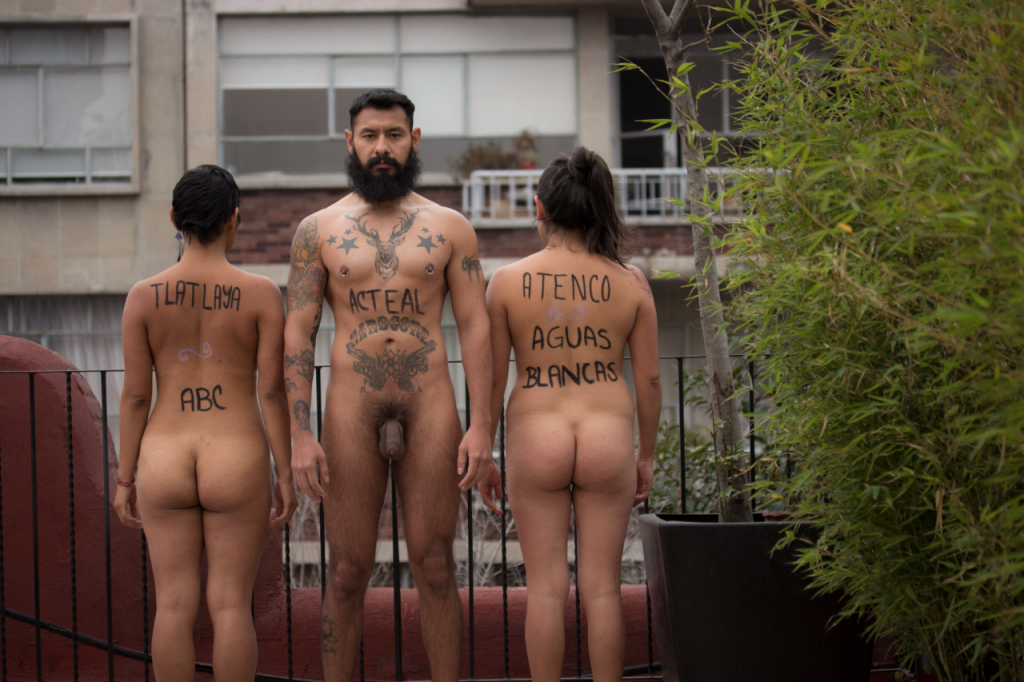
Protestors’ bodies are adorned with the names of cities which experienced similar massacres to that which ocurred in Iguala (ponerelcuerpo.tumblr.com)
The demonstration’s target, however, was one far greater than Mexico City or even the country itself. Photographer Édgar Olguín declared that, “from the very beginning, our aim was to exhibit the project in the largest gallery of the world: the Internet. We did not want to commodify this project.”
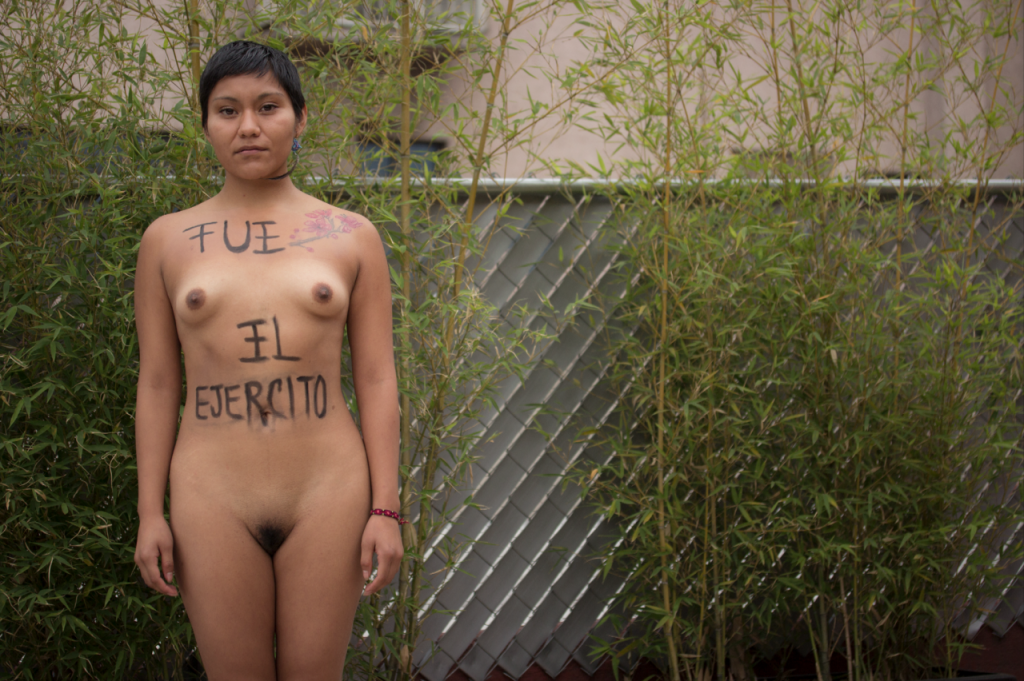
“It was the army.” The protestors’ defiant stance against government corruption commanded the attention of those members of the public passing by (ponerelcuerpo.tumblr.com)
Reactions from the public were a mixture of shock and support, with the artists describing both insults and gestures of encouragement from passerby. The mixture of unease and support resulted from the shock of the protestors’ public nudity meeting with the growing demand for justice and accountability of the government on corruption.
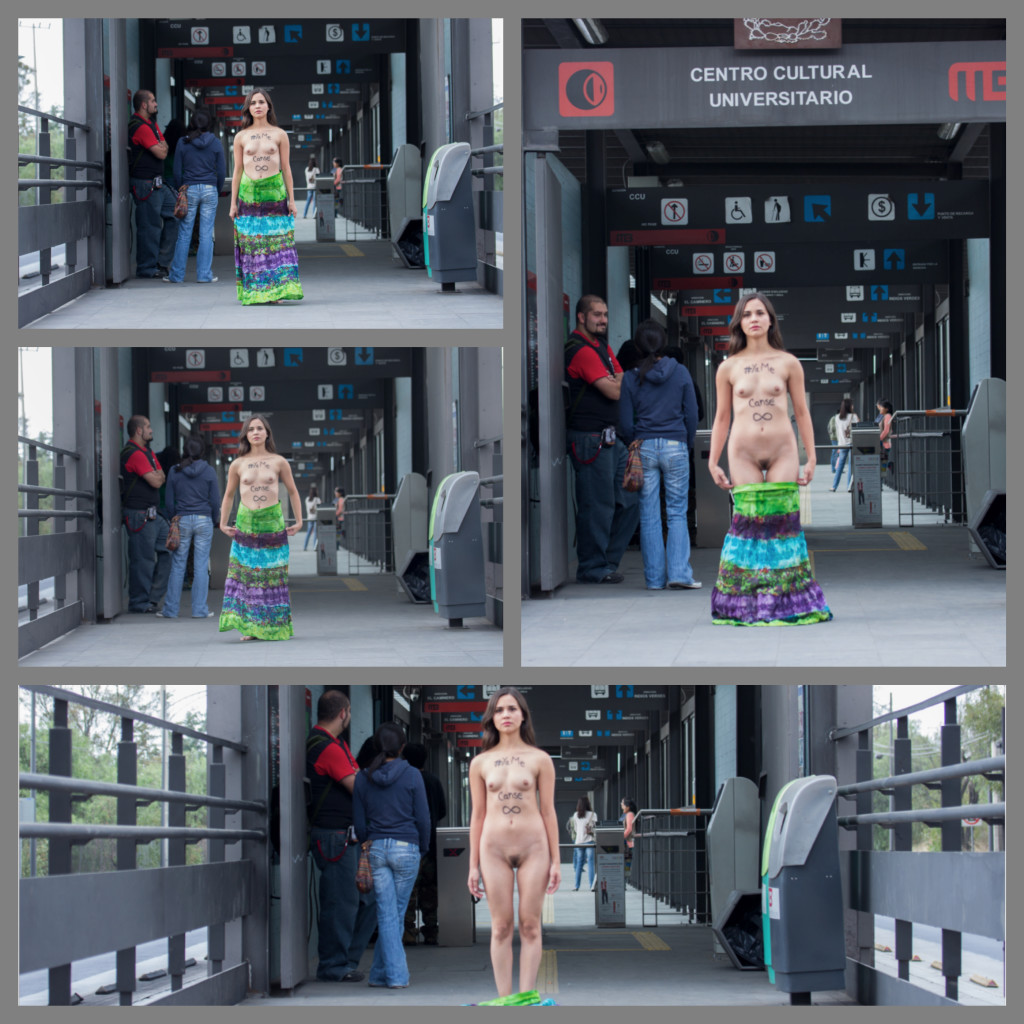
Juárez, placing herself as a human billboard at a metro entrance in Meixco City, displays the phrase “I am tired,” which has become the cry of Mexicans who are standing against government corruption, and the death surrounding it (ponerelcuerpo.tumblr.com)
The full collection of the project’s photographs can be found posted on the artist’s Tumblr page.
